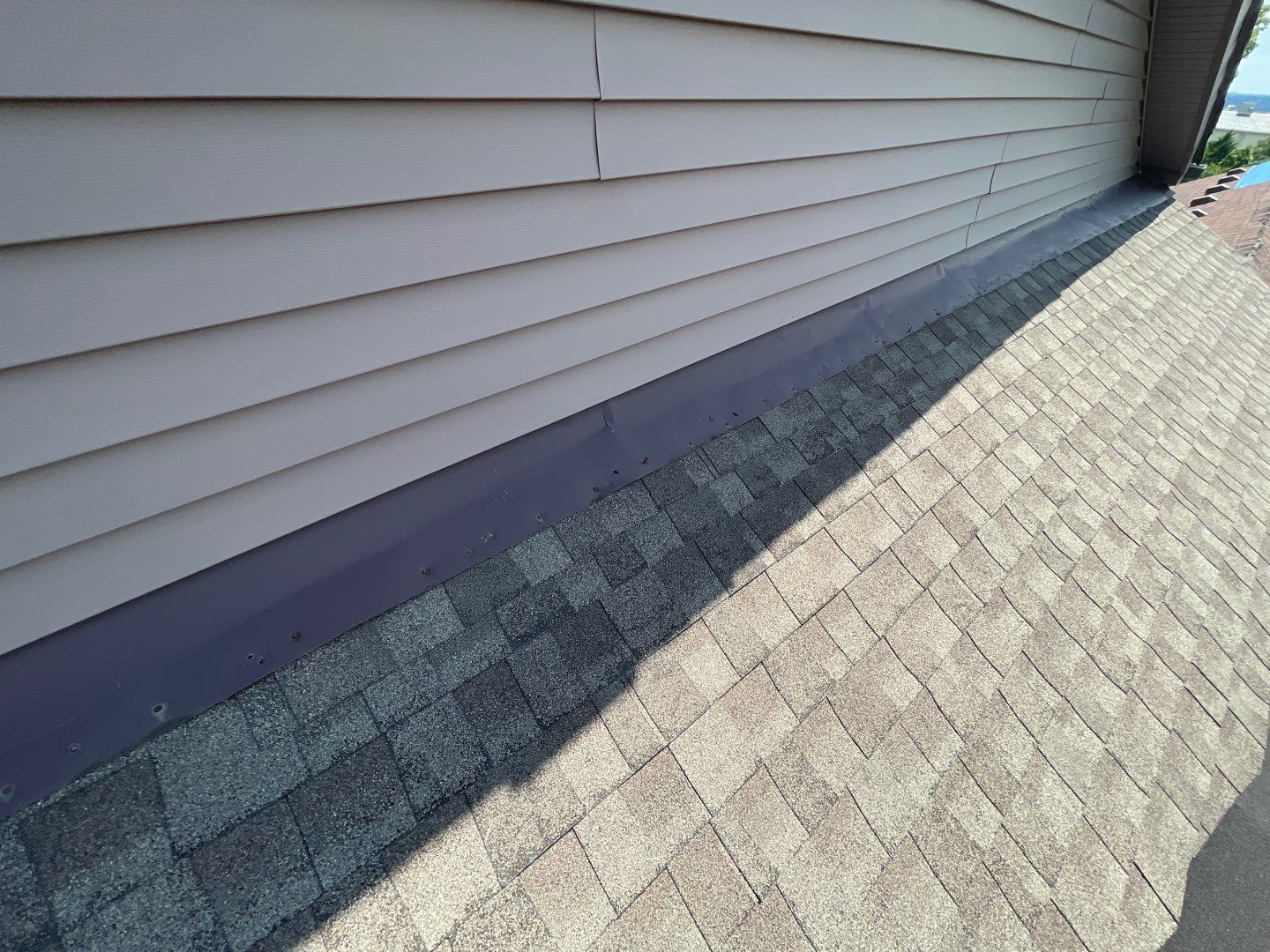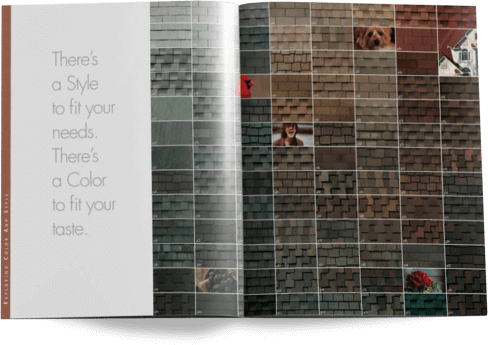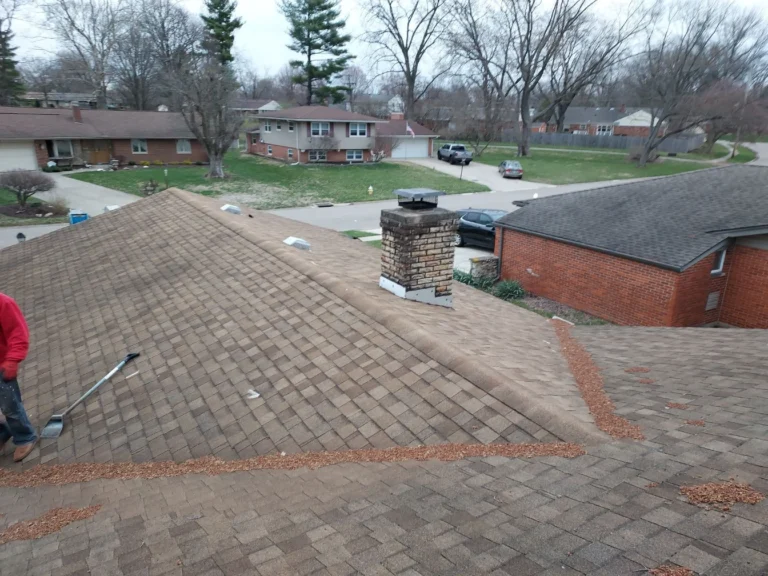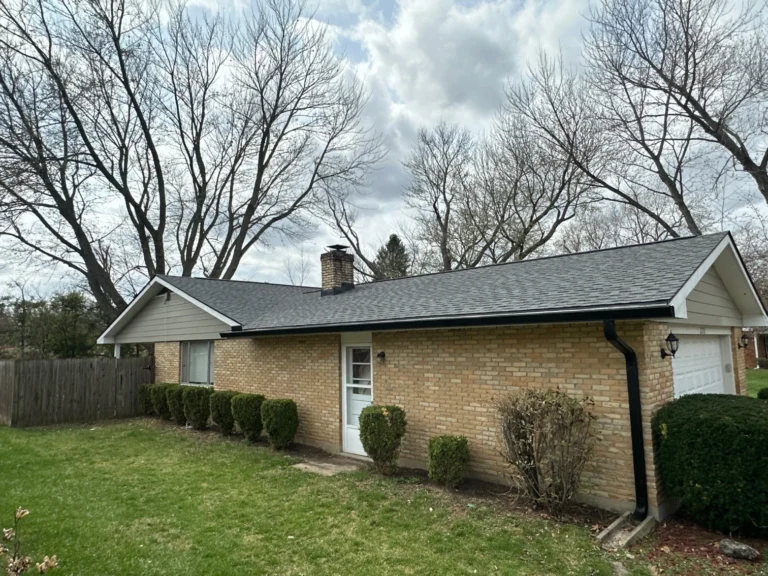Signs of Hidden Roof Damage After a Storm
Estimated Read Time:
- 2 minutes

Living in Miamisburg, OH, residents are no strangers to unpredictable weather — from heavy rains and hail to strong wind gusts. While major roof damage after a storm is often easy to spot, hidden roof damage can be just as destructive, slowly compromising your home’s structure and leading to expensive repairs down the road.
That’s why it’s critical to understand the subtle warning signs your roof might be sending after severe weather.
Why Storm Damage Often Goes Unnoticed
After a major storm, many homeowners perform a quick visual check from the ground. If there are no missing shingles or visible holes, they assume the roof is fine. However, storms can cause micro-damage that isn’t visible to the naked eye.
Wind uplift can loosen shingles without fully detaching them, hail can crack underlayment layers, and water can seep beneath flashing — all of which can lead to leaks and mold over time.
The tricky part is that this kind of damage doesn’t always cause immediate leaks. It might take weeks or even months before signs appear inside your home, making professional inspection essential for catching problems early.
Subtle Signs of Roof Damage to Watch For
Even if your roof looks okay after a storm, there are several clues that indicate something might be wrong.
1. Granules in Your Gutters
Hail and strong winds can loosen the protective granule layer from asphalt shingles. If you notice dark, sand-like debris in your gutters or downspouts, it’s a sign your shingles have been compromised and are now more vulnerable to UV damage and leaks.
2. Water Stains on Ceilings or Walls
Brownish or yellow stains are one of the earliest indicators that water has found its way inside your roof system. These stains often appear weeks after a storm, signaling trapped moisture between the roofing layers.
3. Mold or Musty Odors in the Attic
Hidden leaks create damp environments where mold thrives. A musty smell in your attic or discoloration on rafters or insulation could point to slow water intrusion from damaged flashing or underlayment.
4. Dented Gutters, Flashing, or Vents
Metal components on your roof are often the first to show signs of impact damage. Dents on gutters or flashing suggest that hail or debris has hit your roof with enough force to potentially damage shingles or roof decking.
5. Loose or Curling Shingles
High winds can lift shingles, breaking the adhesive seal that keeps them watertight. Even if the shingles lay back down afterward, the damage is done — moisture can now creep beneath them.
How Storm Damage Affects Roof Longevity
Storm-related wear doesn’t just cause immediate issues; it can drastically shorten your roof’s lifespan. Once moisture penetrates the underlayment or decking, it weakens the entire structure over time. Wood rot, mold growth, and insulation damage can all result from one small area of exposure.
When shingles or seals are weakened, your roof’s energy efficiency also suffers. Air leaks and moisture buildup can make your home harder to heat or cool — leading to higher utility bills. Addressing storm damage quickly not only protects your roof but also your wallet.
Why Professional Roof Inspections Matter
Even the most observant homeowner can miss hidden storm damage. Professional roofers use specialized tools and techniques to identify problems that aren’t visible from the ground.
A detailed inspection by a trusted local roofing contractor ensures:
- All damaged shingles, flashing, and vents are identified.
- Hidden moisture or underlayment issues are detected.
- A complete assessment is documented for insurance purposes.
In Miamisburg, OH, CPM Roof provides expert storm damage assessments designed to protect your home’s value and integrity. Their trained team knows what to look for and can guide you through the process of repair or replacement with minimal stress.
When to Call a Roofer After a Storm
You should call a professional roofing contractor immediately if you notice:
- Missing shingles or visible roof punctures.
- Water spots on your ceilings or attic insulation.
- Sagging roof areas or granule loss.
- A recent hail or windstorm in your neighborhood.
Even if you see no visible damage, scheduling an inspection after a major storm is a smart move. It’s far better to catch small issues before they turn into leaks or structural damage.
If you suspect your home may have hidden storm damage, reach out to CPM Roof at 937-860-2925 for a professional evaluation.
Protecting Your Home Before the Next Storm
While you can’t prevent severe weather, you can take steps to minimize the damage it causes.
- Keep your gutters clean and clear to ensure proper drainage.
- Trim overhanging tree branches that could fall or scrape shingles.
- Schedule annual roof inspections before storm season.
- Replace aging shingles before they become a liability.
By staying proactive, you ensure that when storms hit, your roof stands strong and your home stays dry.
Conclusion
Hidden roof damage is one of the most dangerous outcomes of severe weather because it often goes undetected until it’s too late. By recognizing subtle signs and scheduling a professional inspection early, homeowners in Miamisburg, OH can avoid costly repairs and maintain their roof’s long-term performance.
Your roof is your home’s first line of defense — make sure it stays in top condition all year long.










